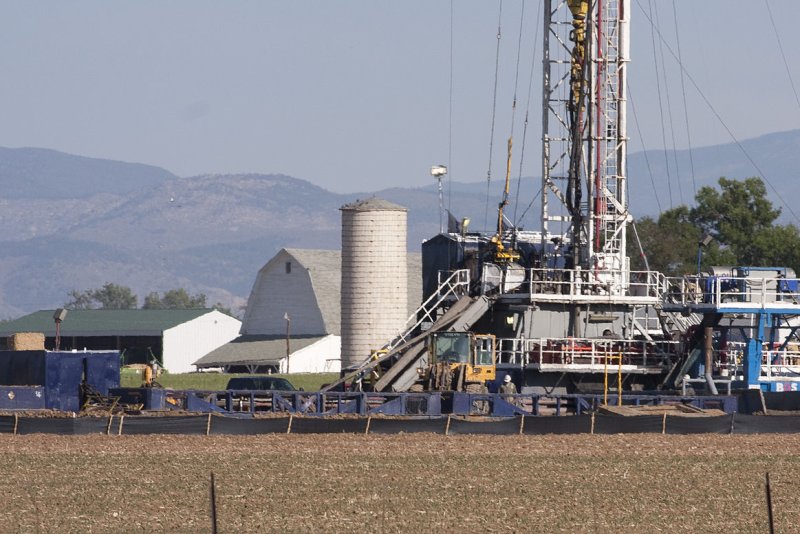Some of the oil reservoirs in the United States may be more resistant to the pressure from weak market conditions than some had expected, a federal report finds. File photo by Gary C. Caskey/UPI |
License Photo
WASHINGTON, Aug. 12 (UPI) -- Some of the oil reserves in the United States may be more resilient to weak oil prices and show slow, but steady, production gains, a federal report finds.
A review from the U.S. Energy Information Administration finds global tight oil, a lighter grade of crude oil found typically in shale deposits, is expected to double by 2040 to about 10.4 million barrels per day. Most of that, the report found, will come from the United States.
"United States tight oil production, which reached 4.6 million bpd in March 2015, but fell to 4.1 million bpd in June 2016, has proven more resilient to low oil prices than many analysts had anticipated," the report read.
In its reference case, EIA estimates total U.S. tight oil production reaches 7.1 million bpd by 2040.
EIA made a similar conclusion in June regarding shale natural gas. About half of all of the natural gas produced in the United States comes from shale gas reserves or is associated with so-called tight oil basins. Much of that comes from lucrative shale beds like the Eagle Ford basin in Texas and the Bakken play in North Dakota.
The EIA's analysis found that, through 2040, total U.S. production from shale gas and tight oil more than doubles to 29 trillion cubic feet, accounting for about 69 percent of total output of natural gas in the country.
Lower energy prices, off about 4.7 percent from this time last year even after recovering 68 percent from this year's lows, have robbed energy companies of the revenue needed for robust exploration and production programs. Nevertheless, most have said they expect to produce more as their operations become more efficient.
Continental Resources, one of the largest stakeholders in the Bakken shale oil basin in North Dakota and Montana, said its production expenses were lower than it previously estimated by 11 percent. Based on that, the company said it expects to produce an average full-year production of around 215,000 barrels of oil equivalent per day, an increase of 5,000 boe per day from its previous estimate.
North Dakota's government said oil production could stay above 1 million bpd through next year if oil prices stay around $45 per barrel. It set a record in December 2014, when oil traded in the $60 range, at 1.23 million bpd.
Higher production volumes and sluggish global economic growth is keeping oil prices relatively lower. By 2040, EIA in its reference case estimates a price for Brent crude oil at $136 per barrel, a price last reached less than a decade ago.















